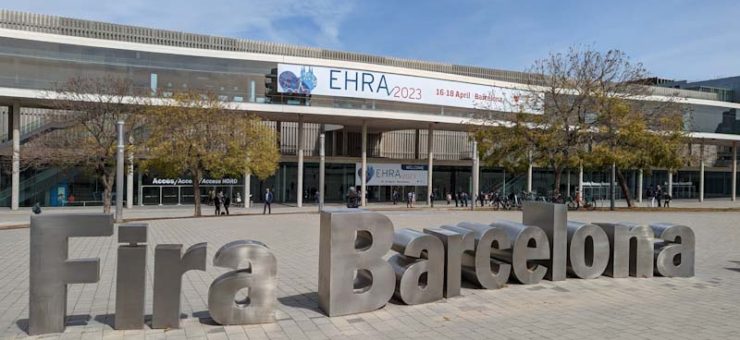EHRA 2023: A new era for electrophysiology?
19 April 2023
The European Heart Rhythm Association’s annual meeting brings together leading scientists, healthcare professionals, and the MedTech industry from across the world to discuss the latest innovations and trends in heart rhythm management. This year was the 20th anniversary and Springboard was there in person to share our expertise in ablation technologies and implantable devices.
With many late-breaking trial results coming out in the weeks leading up to the conference there was a distinct buzz in the air, particularly around trials of the novel technique of pulsed-field ablation and its potential to issue in a new era of electrophysiology (EP). Alongside this, we saw concerns about the sustainability of the EP lab, a focus on early detection, and even the use of robotics to improve patient safety. Here are some highlights:
A new ablation energy
Without question, pulsed-field ablation (PFA) was the first topic on everyone’s mind. This new ablation energy uses a train of short intense electric field pulses, leading to cell death in the heart wall for the treatment of irregular heart rhythms (atrial fibrillation, AF). With only one full system (catheter and energy generator) available on the market, Boston Scientific’s Farapulse is leading the way in PFA. The most recent clinical data shows faster skin-to-skin times, equivalent efficacy to the well-established radiofrequency (RF) ablations and potentially improved safety. Other players are fast in pursuit, with Medtronic’s purchase of Affera, or choosing an alternate route, such as Galvanize with their open platform generator—compatible with the already approved major RF catheters. However, underneath the bubbling excitement was the steady voice of caution, as with any new technology there are still many unanswered questions. Multiple systems and studies show a large discrepancy in efficacy when moving from animal to in-human trials—with no solid understanding of why. Additionally, which parameter in the multi-parameter pulse train is most critical, and tuned to increase efficacy, is either still unknown or a closely guarded proprietary secret of the device companies. Finally, while safety measures from the trials show promise more data is required to increase confidence, leading to some promoting a hybrid PFA/RF approach to utilise the best of both energies.
Early detection of AF
While ablation technologies and clinical outcomes are showing increasing promise, diagnosis of paroxysmal (intermittent) atrial fibrillation is still difficult since some early episodes can be asymptomatic. However, with AF contributing to more than 150,000 deaths a year in the US alone early detection is critical to ensure the best treatment outcomes. To meet these needs, we see a rapid increase in competition to develop wearable heart rate monitors and personal ECGs from patch devices to wrist straps. Providing continuous remote monitoring of the patient as they go about their daily life aids this early detection of AF, even when sometimes asymptomatic, ensuring treatment comes at the right time.
Preventative care through sustainability
Sustainability is a critical issue in the world right now, but the EP lab is lagging in its adoption. Years of innovative progress from multiple companies have created a complex EP lab environment with sometimes repeat devices for different proprietary systems and multiple single-use items. Physicians understand that lowering their carbon footprint is a form of preventative care—reducing the upstream environmental impact of resource mining and manufacturing will ultimately reduce pollution-related illnesses. However, this will take collaboration and input from industry partners, to provide more open and streamlined workstations or options to remanufacture single-use ablations tools.
EHRA is a vibrant and exciting meeting demonstrating scientific advancement, and cutting-edge tech, and highlighting where future development and understanding are required. The new era of pulsed-field ablation for AF treatment appears to be dawning, with the potential for streamlined and shorter procedures with similar efficacy to the previous standards. However, at this early stage, many questions remain and if you need help finding the answers then get in touch.
Written by Joe Batley, Senior Physicist.


